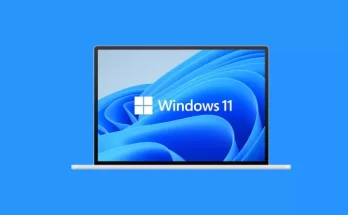Since the coronavirus arrived in the United States, workplaces have had to quickly adopt new processes to ensure their workers and customers’ safety. They’ve had to implement safety checkpoints to monitor temperatures and symptoms, allow for leave for quarantine or infection, and invest in barriers to ensure minimal contact between employees and customers.
In its raw form, online time clock software is not set up to support this type of work environment. Time clock solutions have had to develop new functionalities to help businesses stay safe yet remain efficient when it comes to tracking employee work hours and time off.
Here are just a few ways that employee time tracking software is evolving with an ever-changing workplace.
Contactless Punch Options
As you’re probably well aware now, the coronavirus can transfer from one person to the next by merely touching something an infected individual has sneezed or coughed on. Of course, the virus can be transferred in many other ways, but this is the most common way in an enclosed workspace. Thus came the need for employee time tracking solutions to develop contactless options.
Contactless punch options allow an employee to punch in or out without ever having to touch the device they’re using. The QR code feature is one of those options. This feature allows a manager to set up the time clock on a computer, or any other device, at the beginning of the day. When an employee arrives, they simply need to scan their QR code, and they will automatically be punched in. The same goes for punching out. This is a safe yet efficient way to ensure you’re accurately tracking employee times without putting anyone at risk for infection.
Covid Leave Tracking
Earlier this year, the U.S. Department of Labor enacted the Families First Coronavirus Response Act (FFCRA). It was implemented to help the United States address the impacts of the coronavirus in the workplace by reimbursing private businesses with fewer than 500 employees with tax credits to cover the cost of granting employees paid sick leave for reasons related to Covid.
Under this rule, which is currently scheduled to end on December 21st, 2020, employers can provide up to 80 hours of paid sick leave to employees who need to take leave for COVID-19 reasons, which may include the following:
- An employee is caring for someone subject to a government quarantine order or healthcare provider recommend self-quarantine.
- An employee is subject to a government quarantine order.
- An employee has been advised by a healthcare provider to self-quarantine.
- An employee is experiencing COVID-19 symptoms and is seeking medical attention.
- An employee is caring for their child whose school or place of care is closed or whose child care provider is unavailable for reasons related to COVID-19.
As an employer, recording hours lost due to Covid is crucial. Here are just a few reasons why:
- You can determine precisely which factors are impacting employee productivity or are a cause for staffing shortages. You can use this information to better forecast staffing needs to ensure your business remains profitable during this challenging time.
- You can use employee time off records to claim any tax benefits your business is eligible for.
- Employees can use time off records to determine how much remaining eligible paid time off they have available.
- Employees can also use time off records to establish their eligibility under the FFCRA if needed.
With employee time tracking software, you can create types of time off specifically for Covid. If an employee has been instructed by their physician to take time off or their child gets sick, they can request time off without coming into work. Their request will immediately be sent to their supervisor, and they can take action to ensure they’re adequately staffed to meet business demands.
Temperature & Symptom Checker
The CDC has released guidelines to help businesses reduce the transmission of Covid. Each industry and state has varying guidelines depending on the work’s nature, but the main focus is reducing infection among workers and customers. For example, the CDC recommends that dental clinics screen all individuals, workers, and customers before entering the building.
Many timesheet management solutions have opted to add a temperature and symptom checker option, which will display when an employee is punching in, out, or both. The information the employee enters will be visible on their time card next to their punch and on reporting options – this is especially helpful if your business is required to report symptom information to the CDC.
Remote Employee Monitoring
Remote employee access has been a feature included in most job clock solutions for quite a while now. However, with more employees working from home than ever, that feature has needed to be fine-tuned to meet varying industries’ needs. Many businesses have opted to simply track the GPS location of their workers, while others have opted for more advanced monitoring options.
One of these advanced options included in employee timesheet software is geofencing, which allows you to specify a radius around a location. Only once an employee is within that radius can they punch in or out. IP address locking is another commonly used feature when dealing with remote employees. It allows you to specify an IP address, such as the one associated with an employee’s internet, and they can only punch time on devices with that IP. Both of these features allow employers to ensure that their remote workers are punching time from permitted locations.
The coronavirus has changed the way we’ll work and track time for years to come. Still, with modern employee time tracking software, your business will remain efficient while keeping employee and customer safety a priority.



